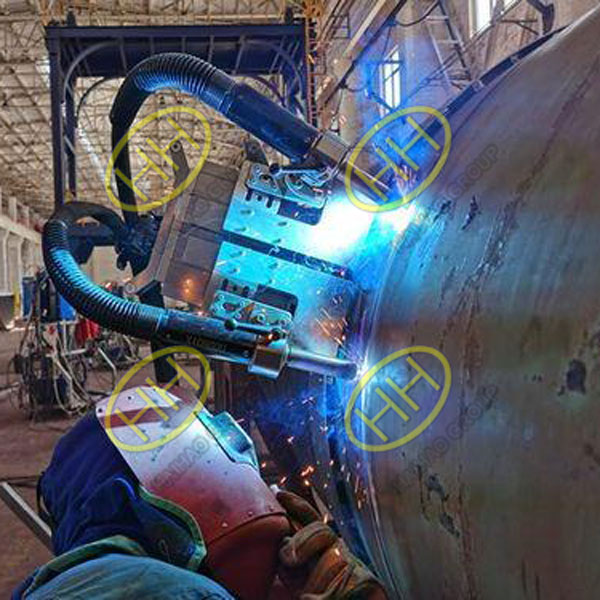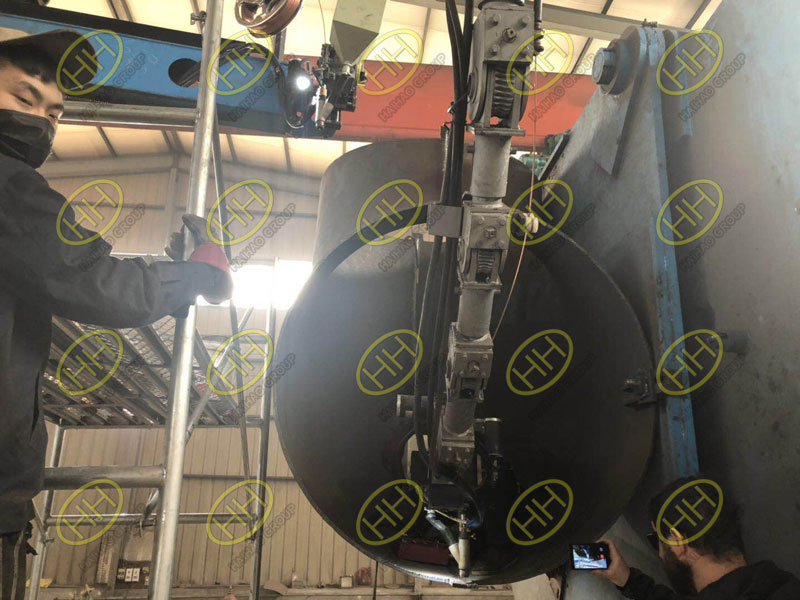How welding current, voltage and speed affect weld quality insights from Haihao Group’s welding expertise
In the field of industrial pipeline fabrication, the quality of welds is critical to structural integrity and service life. At Haihao Group, we understand that achieving high-quality welds requires a deep understanding of how welding current, voltage, and speed interact to shape weld characteristics. These three parameters are the core energy factors that determine the weld bead size, penetration, and overall weld quality.
Let’s explore how each parameter influences the welding process and how we optimize them based on material and application.
1.Welding Current (I) – Controls Penetration Depth
Welding current directly affects the amount of heat delivered to the workpiece. As the current increases:
Weld penetration and reinforcement increase due to greater arc force and heat input.
Weld bead width remains relatively constant or increases slightly.
More filler metal melts, resulting in a higher bead if width remains unchanged.
However, excessive current can lead to:
Burn-through, undercut, and increased spatter.
Poor arc stability when current is too low, resulting in shallow penetration and defects like slag inclusion or lack of fusion.
In practice: We select welding current based on the electrode diameter and adjust it according to joint design, welding position, and base material thickness.
2.Arc Voltage (U) – Controls Weld Bead Width
Arc voltage, which depends on arc length, plays a significant role in determining the width of the weld bead:
Higher voltage increases arc length and heat distribution radius, widening the weld but slightly reducing penetration.
It also reduces the weld reinforcement due to decreased filler metal deposition per unit width.
Excessive arc length (high voltage) may:
Cause arc instability, spatter, and porosity due to air contamination.
Result in inconsistent weld profiles.
Recommended practice: Use a short arc length, typically no longer than the electrode diameter, to maintain arc concentration and reduce spatter.
3.Welding Speed – Affects Energy Input and Bead Shape
Welding speed influences the time the arc stays on a particular spot:
Faster welding reduces heat input, resulting in shallow penetration and narrower beads.
Slower welding increases heat input, leading to wider, deeper welds, but may cause burn-through or coarse grain structure.
Welding speed must be carefully balanced to:
Maintain bead uniformity,
Ensure metallurgical quality,
Maximize productivity without sacrificing weld strength.
4.CO₂ Welding – Transition Types and Optimization
In CO₂ arc welding, we typically see two main metal transfer modes:
Short-Circuit Transfer (Low Current)
Best for thin plates and all-position welding.
Requires precise coordination of current and voltage to minimize spatter.
Controlled by adjusting parameters like inductance, gas flow, wire stick-out, and welding speed.
Globular Transfer (High Current)
Used in medium to thick plates.
Offers deeper penetration and stronger welds.
Needs higher voltage to prevent arc blow and weld bead defects.
5.Other Factors Influencing Weld Quality
Inductance in welding circuit: Affects the rate of current rise (di/dt), influencing spatter and arc stability.
Wire stick-out (length): Should be 10–20 times the wire diameter. Longer stick-out reduces current and penetration.
Gas flow rate: Must match material thickness and position. Typically 5–15 L/min for thin wire, 20–25 L/min for thicker wire.
Electrode polarity: DCEP (direct current electrode positive) is preferred in CO₂ welding for better penetration and stability.
6.Spatter Reduction Techniques
To minimize metal spatter during CO₂ and MAG welding:
Use optimal voltage-current pairing for the wire size.
Keep the torch angle within 20° of vertical.
Minimize wire stick-out to reduce heat loss and control arc.
Ensure proper shielding gas selection:
CO₂ for carbon steel (requires preheating due to gas expansion cooling).
Ar + CO₂ (MAG) for stainless steel.
Pure Ar (MIG) for aluminum and aluminum alloys.
At Haihao Group, we continuously optimize welding parameters to ensure that each joint is structurally sound, visually clean, and suited for its specific service environment. Whether dealing with carbon steel, stainless steel, or complex alloy systems, our technical team leverages its expertise to deliver welds that meet international quality standards. Email:sales@haihaogroup.com


